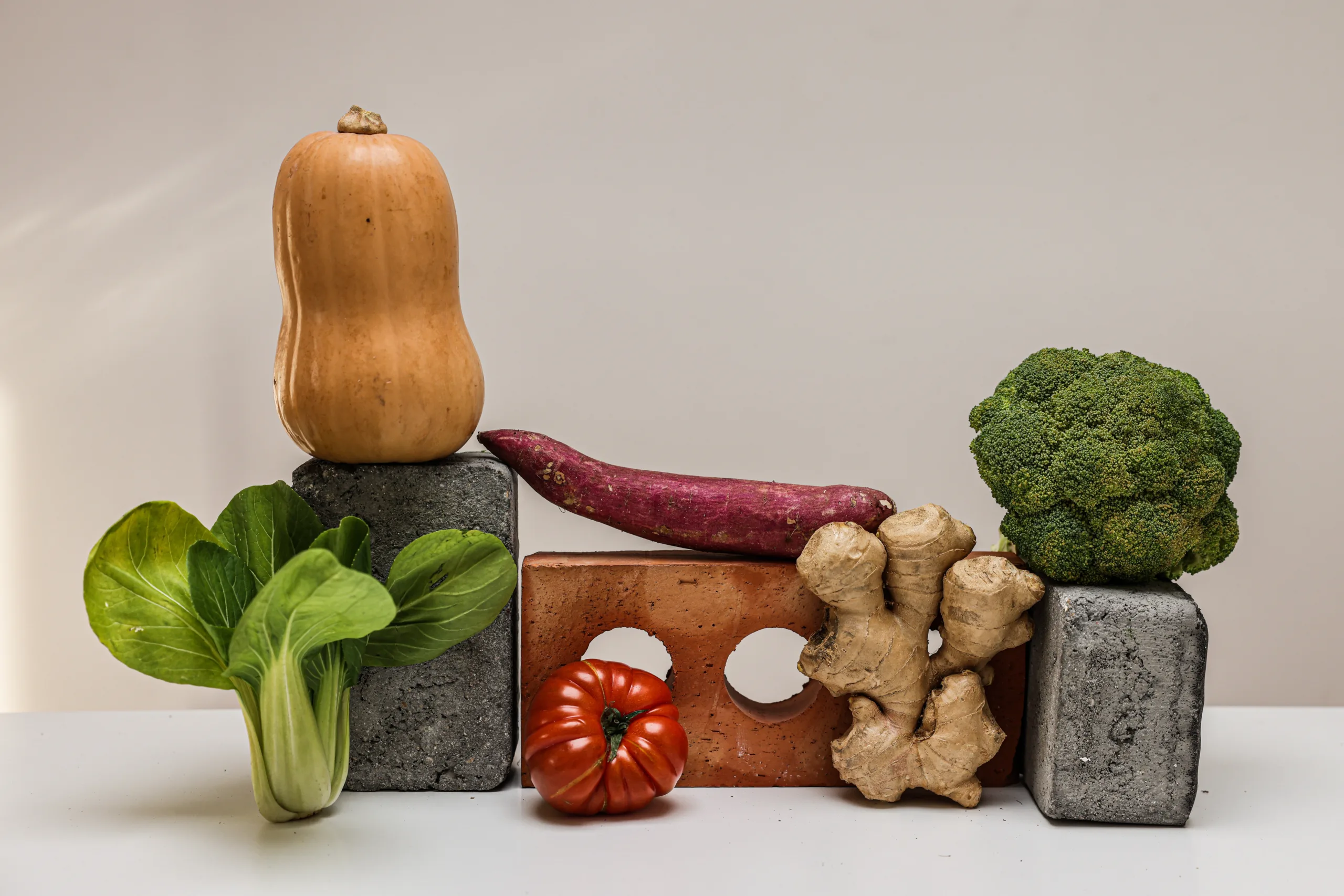Is Bok Choy Low FODMAP?
Are you wondering if bok choy is low FODMAP? If you have IBS or other digestive issues, you may be looking for ways to manage your symptoms through diet. A low FODMAP diet can be an effective way to reduce symptoms like bloating, gas and abdominal pain. But it’s important to understand which foods are safe to eat on a low FODMAP diet. In this article, we’ll discuss all things bok choy – including whether or not it’s considered low FODMAP.
Read on to learn more about bok choy and the FODMAP content of this popular vegetable.Yes, Bok Choy is considered Low FODMAP. It is a great source of vitamins and minerals and can be eaten in moderate amounts on a low FODMAP diet.
What is Bok Choy?
Bok choy, also known as Chinese cabbage, is a type of leafy green vegetable. It belongs to the Brassica family, which includes broccoli and kale. Bok choy has a mild flavor and crunchy texture that makes it a popular ingredient in many Asian dishes. It is high in vitamins A and C, as well as calcium and fiber.
Bok choy is most commonly used in stir-fries, soups, and salads. It can be eaten cooked or raw and can be added to almost any dish for extra crunch and flavor. Bok choy can also be steamed or boiled, then seasoned with soy sauce or other seasonings for a quick side dish. It pairs well with meats such as beef, pork, chicken, and fish.
When shopping for bok choy look for heads that are firm and bright green in color. Avoid any heads that have yellowing leaves or seem wilted or limp. The leaves should be crisp and the stems should be tender but not soft. When stored properly in the refrigerator, bok choy will last up to five days.
Bok choy is a versatile vegetable that adds flavor to many dishes while providing important nutrients for good health. Next time you’re at the grocery store give this cruciferous vegetable a try – you won’t regret it!
What are FODMAPs?
FODMAPs stands for Fermentable Oligosaccharides, Disaccharides, Monosaccharides and Polyols. These are short-chain carbohydrates found in various foods that can be difficult to digest and can cause digestive discomfort. FODMAPs include fructose, lactose, fructans, galactans, polyols and other sugars. FODMAPs are found naturally in many fruits, vegetables, grains, legumes and dairy products. People with digestive issues such as irritable bowel syndrome (IBS) may find that they have difficulty digesting these foods and may experience bloating, gas or abdominal pain after consuming them. Following a low-FODMAP diet can help to reduce these symptoms by eliminating high-FODMAP foods from the diet.
The low-FODMAP diet is a very restrictive diet that eliminates all high-FODMAP foods for at least four to six weeks. This elimination period is followed by a reintroduction phase where the high-FODMAP foods are slowly added back into the diet to determine which foods trigger symptoms. The goal of the low-FODMAP diet is to identify which FODMAPs are causing digestive issues so that they can be eliminated or minimized in the diet.
Click here to preview your posts with PRO themes ››
Is Low-FODMAP Diet Effective for IBS Symptoms?
Studies suggest that a low-FODMAP diet can be effective in reducing symptoms associated with irritable bowel syndrome (IBS). IBS is a gastrointestinal disorder characterized by abdominal pain, bloating, cramping, and changes in bowel habits. It is believed that the symptoms are caused by an intolerance to certain carbohydrates found in food, such as fermentable oligosaccharides, disaccharides, monosaccharides, and polyols (FODMAPs). A low-FODMAP diet eliminates certain high-FODMAP foods from the diet and is thought to reduce the severity of IBS symptoms.
A systematic review of 12 studies found that a low-FODMAP diet was more effective than a placebo or standard diet at reducing gastrointestinal symptoms in people with IBS. The review concluded that the low-FODMAP diet was an effective strategy for managing IBS symptoms. Another study looking at patients with IBS found that after 8 weeks on a low-FODMAP diet, participants experienced significant improvements in abdominal pain and bloating compared to those following a standard diet.
However, it should be noted that not all studies are consistent in their findings; some studies have found no difference between a low-FODMAP diet and other dietary interventions for reducing IBS symptoms. Additionally, the long-term effects of the low-FODMAP diet remain unclear; more research is needed to determine whether it is an effective strategy for managing IBS over the long term.
Overall, it appears that a low-FODMAP diet may be an effective way to manage IBS symptoms. However, it is important to speak with your doctor or dietitian before starting any new dietary regimen to ensure it is right for you.
Characteristics of a Low-FODMAP Diet
A low-FODMAP diet is a dietary approach that is used for reducing symptoms of irritable bowel syndrome (IBS). It involves eliminating or reducing dietary fermentable oligosaccharides, disaccharides, monosaccharides and polyols (FODMAPs), which are types of carbohydrates that can be difficult to digest. The goal of the diet is to reduce uncomfortable symptoms such as bloating, gas, abdominal pain and changes in bowel habits.
The low-FODMAP diet consists of avoiding or limiting certain high FODMAP foods such as wheat, garlic and onions. Other high FODMAP foods include milk, yogurt, beans, apples, pears and many other fruits and vegetables. Additionally, some processed foods may contain hidden sources of FODMAPs such as added sugars and preservatives.
When following this diet, it is important to focus on eating whole foods that are naturally low in FODMAPs. These include lean proteins such as eggs and chicken; healthy fats like olive oil; nuts; seeds; gluten-free grains like rice and quinoa; fresh fruits including bananas, strawberries and blueberries; low-FODMAP vegetables like broccoli and bell peppers; root vegetables like potatoes and sweet potatoes; dairy alternatives such as soy milk or almond milk; healthy snacks like nuts or nut butters.
In addition to avoiding high FODMAP foods, it is also important to focus on eating balanced meals with plenty of fiber from fruits, vegetables and whole grains. Eating smaller meals throughout the day can also help prevent uncomfortable symptoms associated with IBS. Lastly, it is important to keep in mind that everyone’s tolerance for certain foods will vary so it is best to consult with a doctor or nutritionist before making any drastic dietary changes.
Click here to preview your posts with PRO themes ››

How to Identify High and Low FODMAP Foods?
Identifying high and low FODMAP foods can be a tricky process. The acronym FODMAP stands for Fermentable Oligosaccharides, Disaccharides, Monosaccharides, and Polyols. These are certain types of carbohydrates found in certain foods that can be difficult for some people to digest. FODMAPs can be found in a variety of foods, including dairy products, grains, fruits and vegetables. People who have digestive issues such as irritable bowel syndrome (IBS) may need to limit their intake of FODMAPs.
The easiest way to identify high and low FODMAP foods is to use a FODMAP food list. There are many online resources that provide comprehensive lists of both high and low FODMAP foods. Additionally, many health food stores carry specific products labeled “low-FODMAP” or “no-FODMAP” that can make it easy to identify suitable foods.
When shopping for food or reading nutrition labels, it is important to look for ingredients that may indicate the presence of FODMAPs. Ingredients such as fructose, lactose, polyols (such as sorbitol and mannitol), inulin and fructans should be avoided if following a low-FODMAP diet. Additionally, it is important to note that certain fruits and vegetables contain varying levels of FODMAPs depending on how they are prepared. For example, potatoes are considered low-FODMAP when boiled but high-FODMAP when mashed or roasted.
Overall, identifying high and low FODMAP foods requires careful attention to food labels and ingredient lists. Using a comprehensive list of both high and low FODMPA foods can help make the process easier. Additionally, paying attention to how certain fruits and vegetables are prepared can also help reduce the amount of potentially problematic ingredients consumed.
Bok Choy as a High or Low FODMAP Food
Bok choy, also known as Chinese cabbage, is a cruciferous vegetable that is commonly used in Asian cuisine. It is a great source of vitamins and minerals, and is low in calories and fat. Unfortunately, bok choy can also be high in FODMAPs, which are short-chain carbohydrates that can cause digestive distress for some people.
FODMAPs are found naturally in many foods, but certain foods contain higher amounts than others. Bok choy is one of those foods with high levels of FODMAPs. It contains fructans, which are short-chain carbohydrates that can cause problems for people with irritable bowel syndrome (IBS) or other digestive sensitivities.
Fortunately, bok choy does not need to be avoided completely if you have IBS or other digestive sensitivities. It can be eaten in moderation, as part of a balanced diet. The key is to keep portions small and stick to low-FODMAP recipes that call for bok choy as an ingredient.
When preparing bok choy at home, it’s best to cook it rather than eat it raw. Cooking helps break down the FODMAPs and makes them easier to digest. Steaming the bok choy until it’s just tender is usually the best way to go; boiling or stir-frying can cause the FODMAPs to become more concentrated and difficult to digest.
Click here to preview your posts with PRO themes ››
Overall, bok choy should be considered a high-FODMAP food due to its high levels of fructans. However, it does not need to be avoided completely if you have IBS or other digestive issues; just make sure you’re eating it in moderation and cooking it properly before consuming it.
By following these guidelines, you can still enjoy the taste and nutritional benefits of this versatile vegetable without having to worry about any potential digestive distress!
Incorporating Bok Choy on a Low-FODMAP Diet Plan
Bok choy is a versatile vegetable that can be easily incorporated into a low-FODMAP diet plan. It is an excellent source of vitamins and minerals, including vitamin A, vitamin K, calcium, and magnesium. Additionally, bok choy is low in FODMAPs, making it an ideal food for those on a low-FODMAP diet.
There are many different ways to incorporate bok choy into your low-FODMAP diet plan. One way is to add it to soups and stews. Bok choy adds a delicious flavor and texture to any soup or stew. Additionally, it is an excellent source of nutrients and helps to bulk up the dish without adding too many FODMAPs.
Another way to incorporate bok choy into your diet plan is by using it as a side dish. Bok choy can be steamed, sautéed, or stir-fried with other vegetables for a delicious side dish that adds nutrition and flavor without adding too many FODMAPs. Additionally, bok choy can be used as an ingredient in salads or mixed with other vegetables for a nutritious meal or snack.
Finally, bok choy can also be used as an ingredient in sauces and dips. For example, it can be blended with herbs and spices to make flavorful sauces or dips that are low in FODMAPs but still packed with flavor. Additionally, bok choy works well in Asian dishes such as stir fry or noodle dishes as it adds flavor without adding too many FODMAPs.
Incorporating bok choy into your low-FODMAP diet plan is an easy way to get the nutrition you need while still following a restrictive diet plan. There are many different ways to use bok choy so you can enjoy the health benefits without having to worry about consuming too many FODMAPs.

Conclusion
In conclusion, Bok Choy is considered a low FODMAP food and can be enjoyed in moderation as part of a balanced diet. To be on the safe side, it’s best to stick with one-half cup servings at a time and avoid eating too much in one sitting.
It’s important to remember that while Bok Choy may be low FODMAP, other ingredients often used in recipes containing Bok Choy may not be low FODMAP, so it’s important to check labels and recipes for high FODMAP foods before consuming.
Overall, Bok Choy is an excellent addition to any meal plan for those following the low FODMAP diet. As long as you keep portion sizes in check and watch out for high FODMAP ingredients when cooking, you should be able to safely enjoy a variety of Bok Choy recipes.
By following the guidelines outlined in this article, you can feel confident that you can include Bok Choy in your diet while still maintaining your digestive health.

